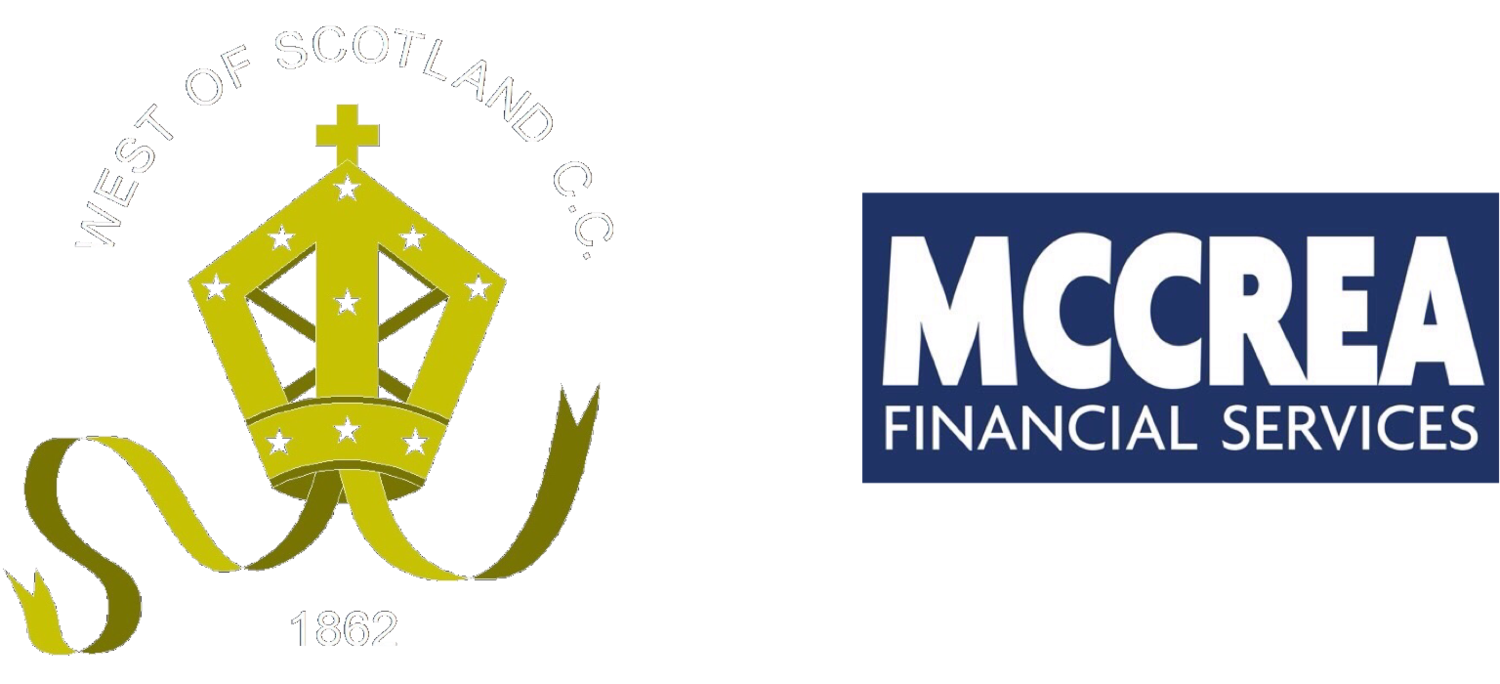Club history
Early history
West of Scotland Cricket Club was founded in 1862 as a result of a meeting which took place at the then Clarence Hotel in George Square, Glasgow, between a group of local businessmen and players from the Clutha Cricket Club, who had used the northern part of Hamilton Crescent for matches prior to West's inception. One of the businessmen present was Colonel (later Sir) David Carrick Buchanan who became the first President of the Club and who continued in this role until his death in 1903. Sir David was devoted to the sport of cricket and was patron of a number of clubs, providing invaluable financial assistance to them.
The name, West of Scotland Cricket Club was coined by one John McNeill held high ambitions for the Club and envisaged it becoming the MCC of Scotland. All-England XIs were invited to the Club and other matches of a similar nature arranged, which included the first ever visit of an Australian team to Scotland in 1878.
Tours of England were also undertaken and it was during the first match of one such Tour in July 1885 that a West cricketer achieved a world record which stood for 12 years. The match was against Priory Park C.C. (Chichester) during which Mr. J. S. Carrick batted for two days, achieving a score of 419 not out. In 1891, Dr. W.G. Grace brought a team to Partick and won by an innings and 33 runs.
By 1922 the Club had a membership of over 500, seating accommodation for 3,500 and a turnstile at every entrance. A reconstructed pavilion was opened in April 1923 by the then President, Mr. Peter Dawson and a new scoreboard built in 1936. Following damage sustained during World War II extensive repairs were made to both the pavilion and ground which included the acquisition of turf from Renfrew Golf Course. The Indoor School was opened in February 1957 and was the first of its kind in Scotland.
Here at West, we have had many notable visitors. Between 1965 and 1970 Scotland played matches at Hamilton Crescent against New Zealand, the West Indies, MCC and Ireland. In August 1975 a benefit match was held for the then Club Professional, Salahuddin, and those taking part included Colin Cowdrey, Mike Denness, Intikhab Alam, Majid Khan, Asif Iqbal and Sir Garfield Sobers.
County, representative and international cricket at Hamilton Crescent
Ongoing improvements to the ground and buildings enabled West to continue hosting Senior and International matches and a visit by a Pakistan touring side in 1982 was followed by a series of Benson and Hedges One Day matches between Scotland and Gloucestershire, Leicestershire, Yorkshire, Derbyshire and Northants. In July 1989 3,500 spectators watched Scotland play Australia. Following this, Scotland also played Essex and Kent at Hamilton Crescent. Following this, Scotland also played Essex and Kent at Hamilton Crescent. The last full International was held in 2003 between Scotland (with guest professional, Rahul Dravid) and Pakistan.
West became a regular venue for the Scottish Cup Final from 1966 which is held at the end of August before Cricket Scotland decided to have different venue each year. The Cup Final returned to West in 2016 with a thrilling encounter between Arbroath and the winners, Clydesdale. Our tradition of hosting representative fixtures continued with five European Championship matches being held at Hamilton Crescent during 2000.
Football at Hamilton Crescent
Hamilton Crescent also has a place in football history, as the first ever Scotland v. England international was staged here in 1872, which resulted in a 0-0 draw. The Club received the sum of £1.10s (£1.50 in today's currency) for the hire of the ground. The following two internationals were also staged at Hamilton Crescent in 1874 and 1876. Scotland fared better in these two games, winning 2-1 and 3-0 respectively. To continue the football theme, the Scottish Cup Final of 1876-77 also took place at Hamilton Crescent, with Rangers losing 3-2 to Vale of Leven.







Read about the history of our highly successful Junior Section.